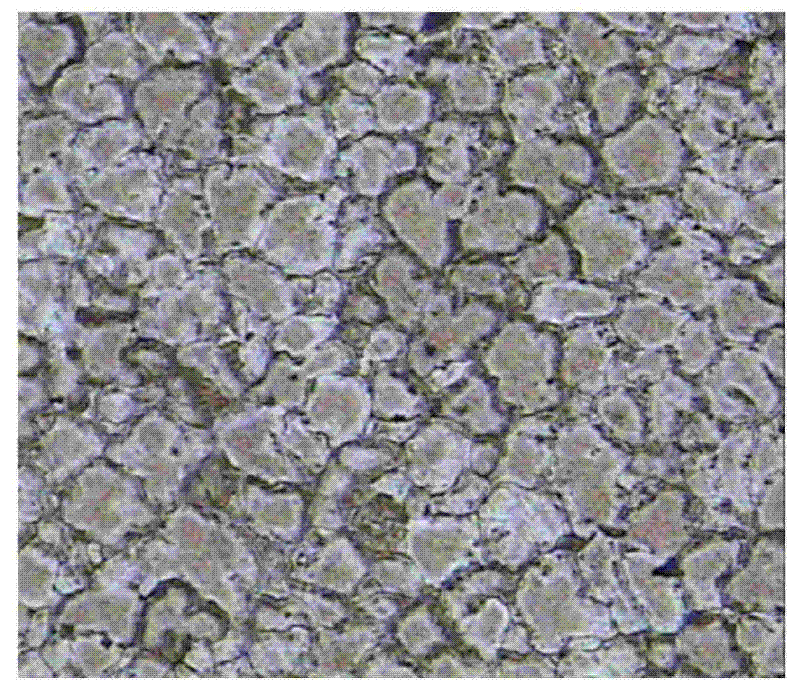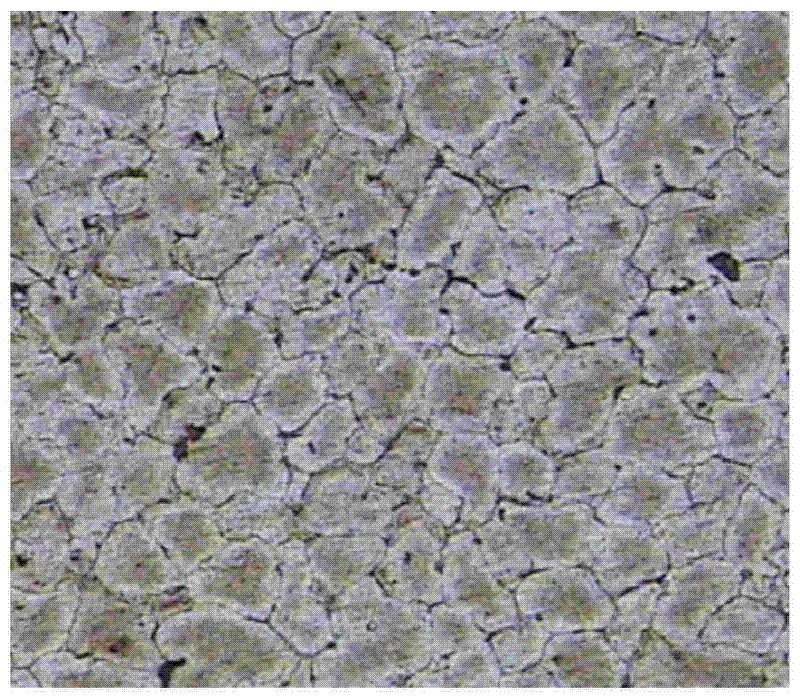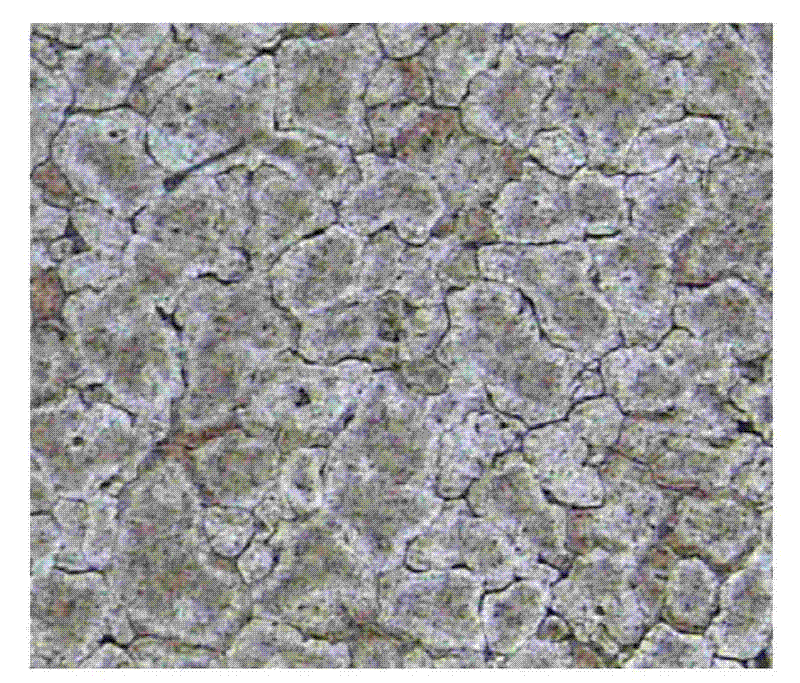Preparation method of Al-5 percent Cu base alloy with low heat cracking tendency
An al-5%cu-based alloy technology, applied in the field of Al-5%Cu-based alloy preparation, can solve the problems of high hot cracking tendency and wide crystallization temperature range of Al-5%Cu-based alloys, and achieve hot cracking The effect of increased resistance, narrowed crystallization temperature range, and improved hot cracking tendency
- Summary
- Abstract
- Description
- Claims
- Application Information
AI Technical Summary
Problems solved by technology
Method used
Image
Examples
specific Embodiment approach 1
[0012] Specific implementation method 1: The preparation method of Al-5% Cu-based alloy with low thermal cracking tendency in this embodiment is realized through the following steps: 1. Weigh the following raw materials according to mass percentage: 66.15% to 82.45% aluminum, 10% aluminum Copper master alloy, 2%-5% aluminum-manganese master alloy, 1.25%-5% aluminum-zirconium master alloy, 1.25%-7.5% aluminum-vanadium master alloy, 2%-5% aluminum-titanium-boron master alloy, 0.15 % to 0.25% cadmium and 0.9% to 1.1% aluminum yttrium master alloy; 2. Clean the surface of the raw materials in step 1, then dry them naturally and mix them into a graphite crucible, then place the graphite crucible at 700 to 750 Heating at ℃ until the raw material is completely melted, then injecting argon gas for 20-40 minutes, then pouring the melt into a metal ingot mold to obtain an Al-5%Cu-based alloy chilled ingot; 3. Weighing by mass percentage 15%~25% Al-5%Cu-based alloy chilled ingot obtained...
specific Embodiment approach 2
[0015] Specific embodiment 2: The difference between this embodiment and specific embodiment 1 is that in step 1, the following raw materials are weighed according to mass percentage: 70% to 75% of aluminum, 10% of aluminum-copper master alloy, 2.5% to 4% of aluminum Manganese master alloy, 3%~4.5% aluminum zirconium master alloy, 5%~7% aluminum vanadium master alloy, 2.5%~4% aluminum titanium boron master alloy, 0.2% cadmium and 1% aluminum yttrium master alloy. Other steps and parameters are the same as those in Embodiment 1.
specific Embodiment approach 3
[0016] Embodiment 3: The difference between this embodiment and Embodiment 1 or 2 is that in Step 2, a sodium hydroxide solution with a mass concentration of 10% is used to clean the raw materials in Step 1. Other steps and parameters are the same as those in Embodiment 1 or Embodiment 2.
PUM
| Property | Measurement | Unit |
|---|---|---|
| strength | aaaaa | aaaaa |
Abstract
Description
Claims
Application Information
 Login to View More
Login to View More - R&D
- Intellectual Property
- Life Sciences
- Materials
- Tech Scout
- Unparalleled Data Quality
- Higher Quality Content
- 60% Fewer Hallucinations
Browse by: Latest US Patents, China's latest patents, Technical Efficacy Thesaurus, Application Domain, Technology Topic, Popular Technical Reports.
© 2025 PatSnap. All rights reserved.Legal|Privacy policy|Modern Slavery Act Transparency Statement|Sitemap|About US| Contact US: help@patsnap.com



